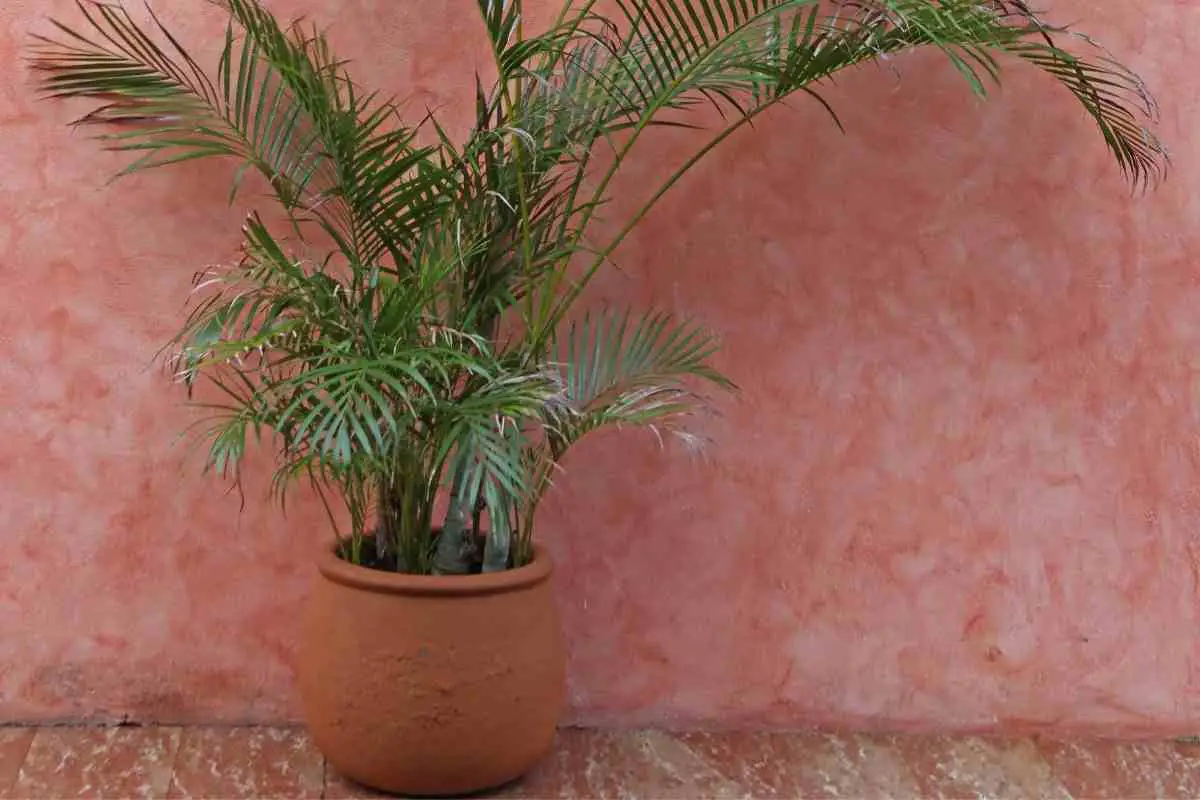There are several motivations for planting palms around your swimming area.
If you have an existing pool, you might want to add trees for more serenity or keep off prying eyes.
You can grow palms to beautify your backyard if you’re building from scratch. Regardless of your objective, trees are valuable to any swimming pool area.
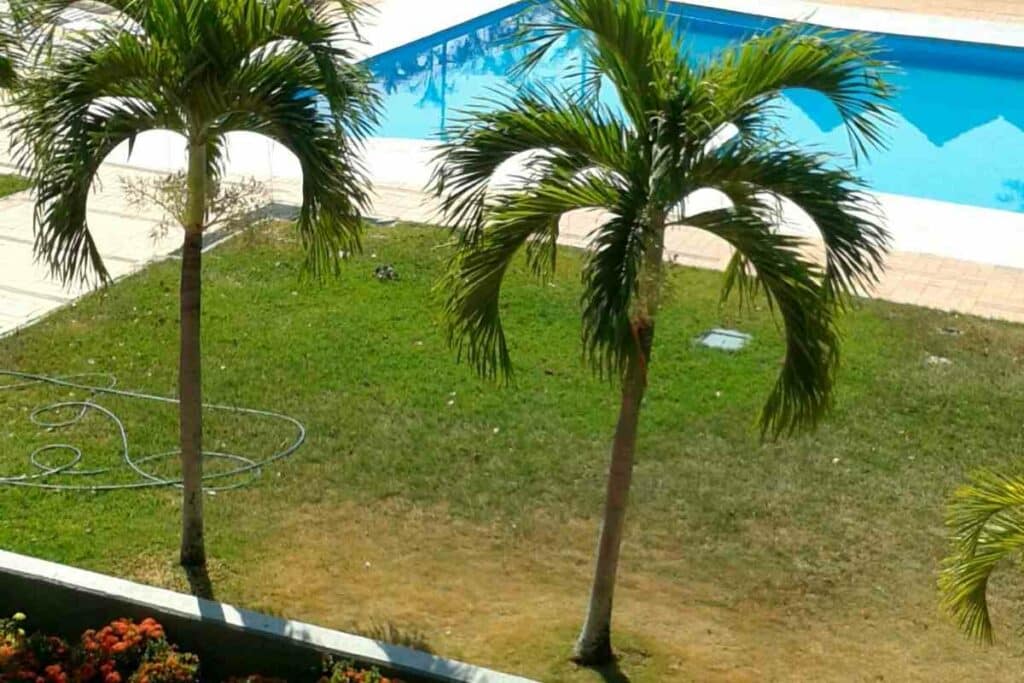
However, they can also make cleaning more challenging.
Palm trees are a popular choice among homeowners because they add a tropical feel to your backyard oasis.
With these plants, you feel like you’re relaxing by the beach, especially on warm summer afternoons.
What’s more, palms are available in various sizes and shapes.
For Your Swimming Pool – You’ll want the more diminutive species because they’re easier to maintain and don’t weaken the structure itself. Here are some of the small palm trees for your pool area.
1. Mediterranean Fan Palm (Chamaerops humilis)
Interestingly, the Mediterranean Fan Palm is the only palm species native to Europe.
As the name suggests, this medium-sized plant has fan-shaped fronds that add an aesthetic appeal to your pool area.
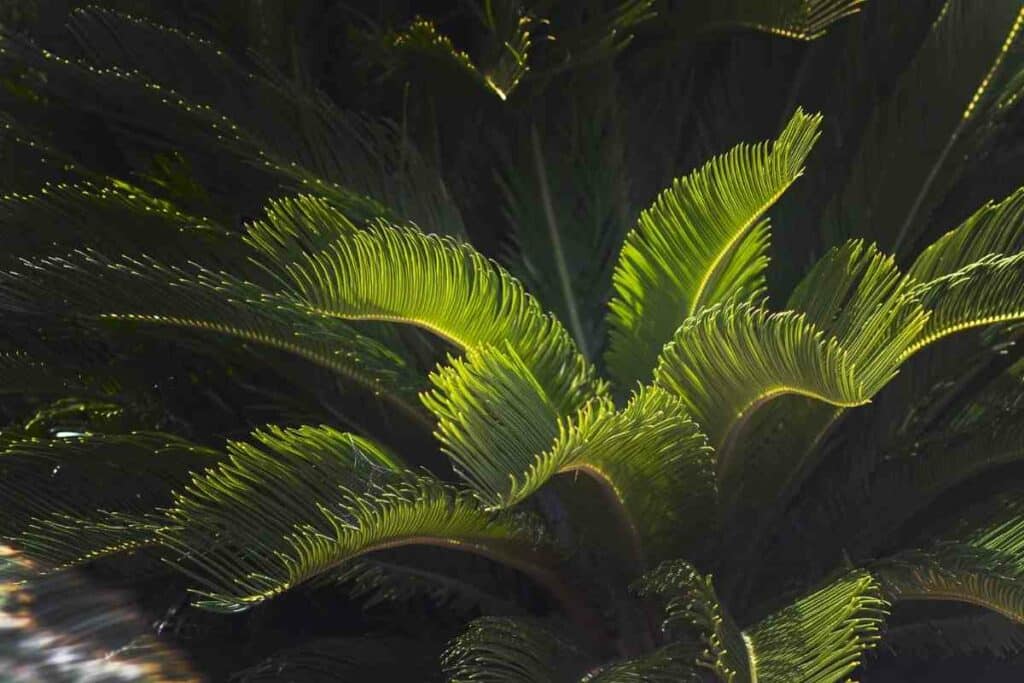
The plant usually has multiple trunks clumped together to give it a full, plump appearance.
The thickness of their trunks and the lush nature of their foliage makes them ideal for enhancing privacy.
These palms can also fill spaces between large trees.
Hardiness is perhaps the standout property of the Mediterranean Fan Palm.
Once planted, this species requires tiny amounts of water and can withstand prolonged droughts.
Even Better – Cold, freezing weather doesn’t affect this plant. Moreover, the Mediterranean Fan Palm is a low-maintenance species. You don’t have to prune it every few weeks like other poolside plants.
You can add style to your poolside by installing night lighting effects.
When the lights illuminate the palm trees’ fronds, they cast beautiful shadows on the nearby walls.
These are useful when you want to create varying atmospheres for different occasions.
2. Pygmy Date Palm (Phoenix roebelenii)
The Pygmy Date Palm has non-invasive roots and doesn’t grow tall, making it ideal for tight spaces, such as decks, patios, and swimming pools. You can also plant it between larger trees.
Despite being native to Southeast Asia, this slow-growing species is highly adaptable to different climates.
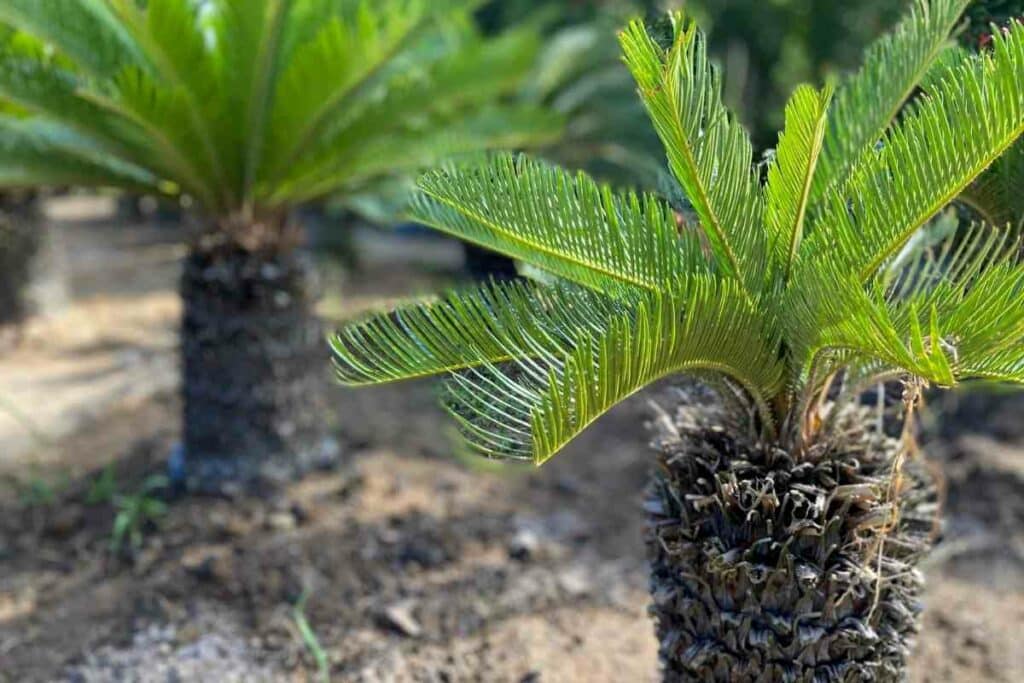
It can withstand a broad range of conditions, from hot summers to freezing winters.
Additionally, Pygmy Date Palms are among the cleanest palm species.
They don’t have flowers that can litter your pool. Also, they only need pruning when their bright green foliage turns brown.
Always Good Idea: We ReWhether you use them for accenting other poolside features or as the focal point, Pygmy Date Palms don’t disappoint.
3. Sago Palm (Cycas revoluta)
Although many people consider it a member of the palm family, the Sago Palm is a Cycad and close to the pine family.
It’s also one of the oldest ‘palm’ species, having existed for over 200 million years.
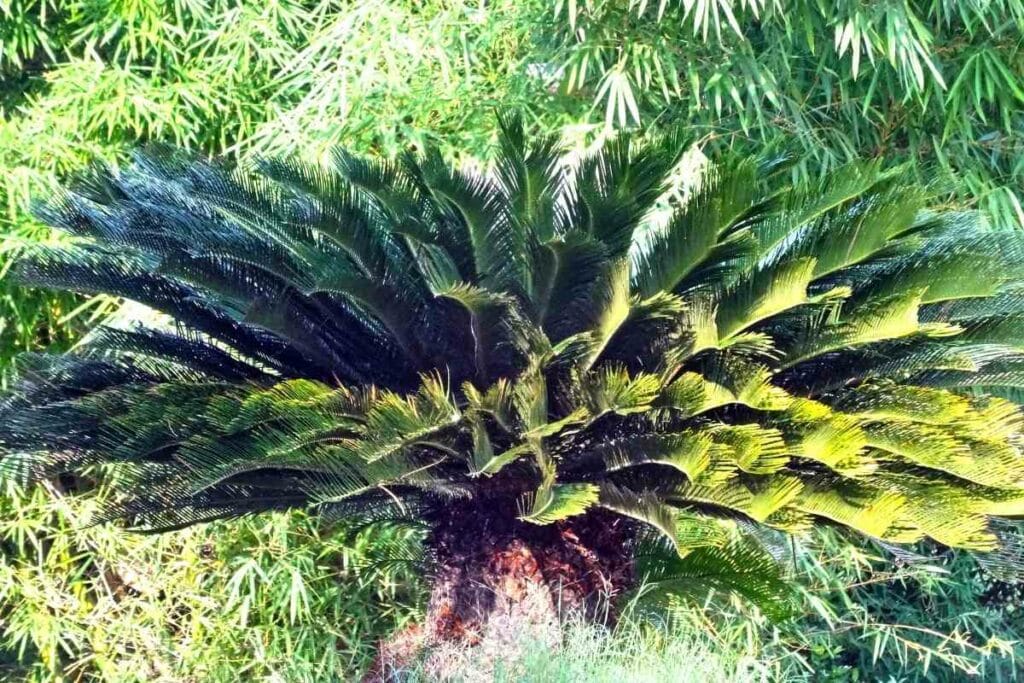
Like other dwarf palm trees, the Sago Palm grows slowly.
When it matures, beautiful arching fronds emerge from its trunk. The trunk usually comes from old cut fronds.
Additionally, they don’t have invasive roots.
This allows you to plant them in confined spaces like:
- courtyards
- sidewalks
- and poolside
You can also grow them in containers.
Good News – Another standout property of this tree is its ability to thrive in partial and complete shade.
It can withstand hot summers and freezing winters without any noticeable effects.
Amazingly, this plant can survive for more than 100 years.
4. Pindo Palm (Butia capitate)
The Pindo Palm is a small, low-maintenance species that can create a visually stunning focal point by your poolside.
Its diminutive nature means that you can grow it in pots.
A fully grown Pindo Palm has silver-green arching fronds that blend seamlessly in contemporary, Mediterranean, and tropical-themed landscapes.
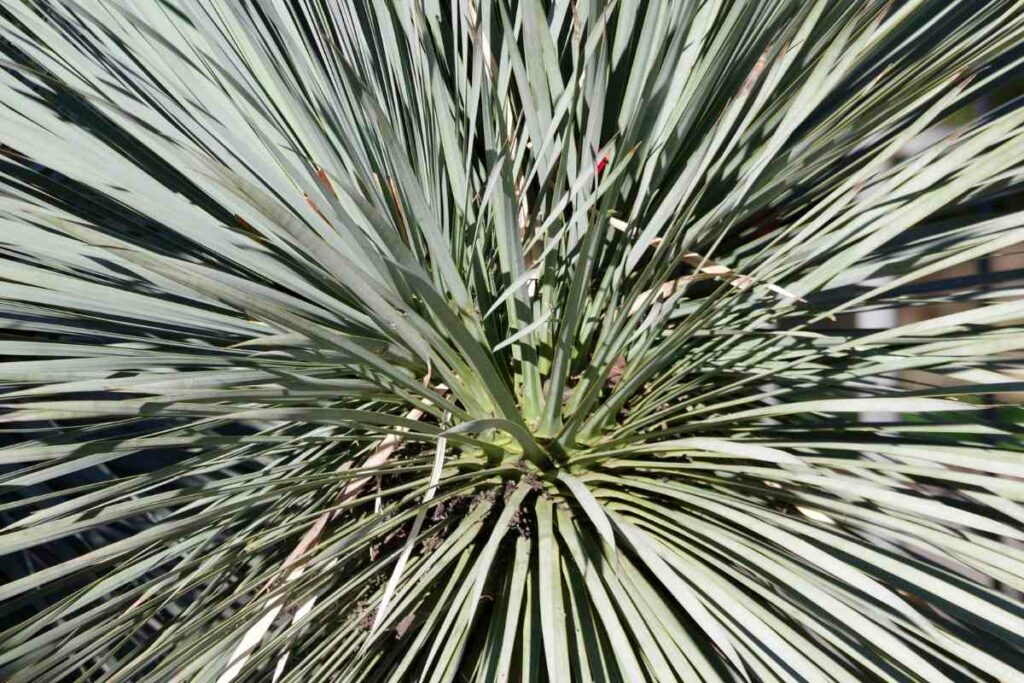
Besides, it excels in all climates, making it suitable for any home.
Due to its slow growth rate, this palm tree requires little watering once planted.
It’s wise to purchase a seedling instead of planting the seeds if you’re a homeowner.
The Pindo Palm will inject color into your backyard regardless of where you place it.
From Experience: The plant produces yellow to reddish flowers that attract beautiful birds to your lawn in summer. After fertilization, these flowers have the Pindo fruit that can manufacture jelly.
5. Bismarck Palm (Bismarckia nobilis)
Bismarck Palm is an evergreen plant with round, steel-blue, fan-shaped fronds.
It’s popular due to its attractive foliage, which has a soft texture.
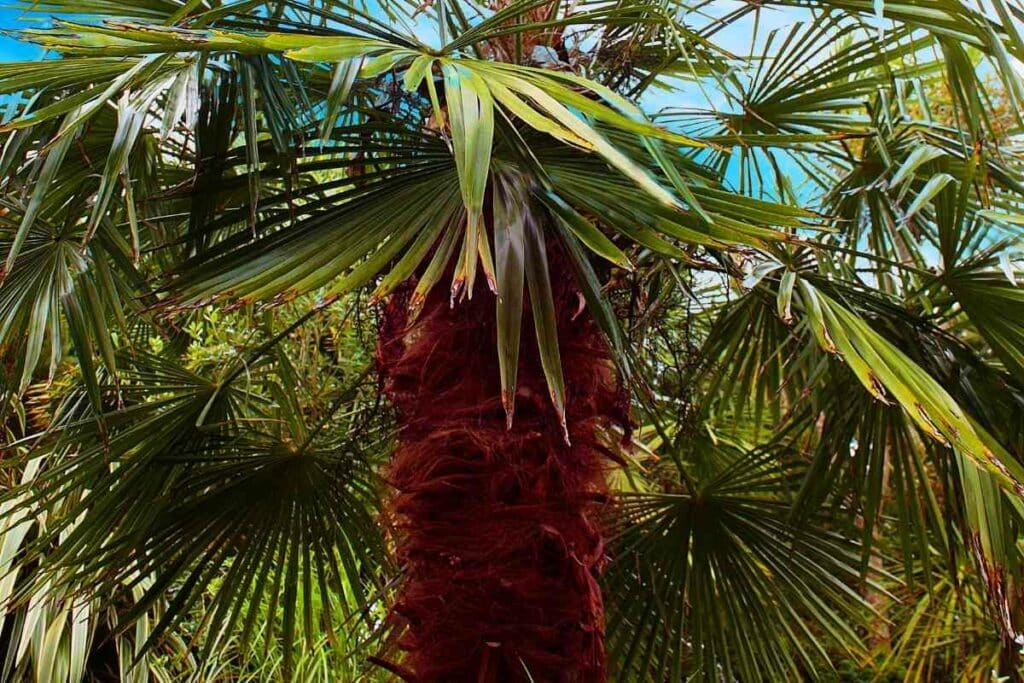
The species is dioecious, meaning that male and female plants are separate.
Remarkably, this palm can regrow at sub-zero temperatures (up to -4 degrees). It also has exceptional drought tolerance.
Its bold color and distinctive shape can make a dramatic statement by your poolside.
When Pruning This Palm Tree – Avoid removing leaves that are partially dead. It’s worth noting that this species is more vulnerable to windstorms than other palm trees.
6. Dwarf Palmetto (Sabal minor)
Dwarf Palmetto is one of the hardiest palm tree species. It is primarily trunk-less, but some plants have trunks.

Instead, it has petioles that hold fan-shaped leaves reaching 90 cm in diameter.
Upon maturity, the plant blooms creamy-white flowers with a pleasant scent. The flowers can grow up to 6 feet and eventually turn into black fruits.
Sabal minor is a hardy species that can survive -10 degrees without leaf damage.
Unlike other species, it’s easily propagated by seed. Once established, it exhibits remarkable drought tolerance.
7. Bottle Palm (Hyophorbe lagenicaulis)
The Bottle Palm draws its name from its peculiar trunk, which looks like a bottle.
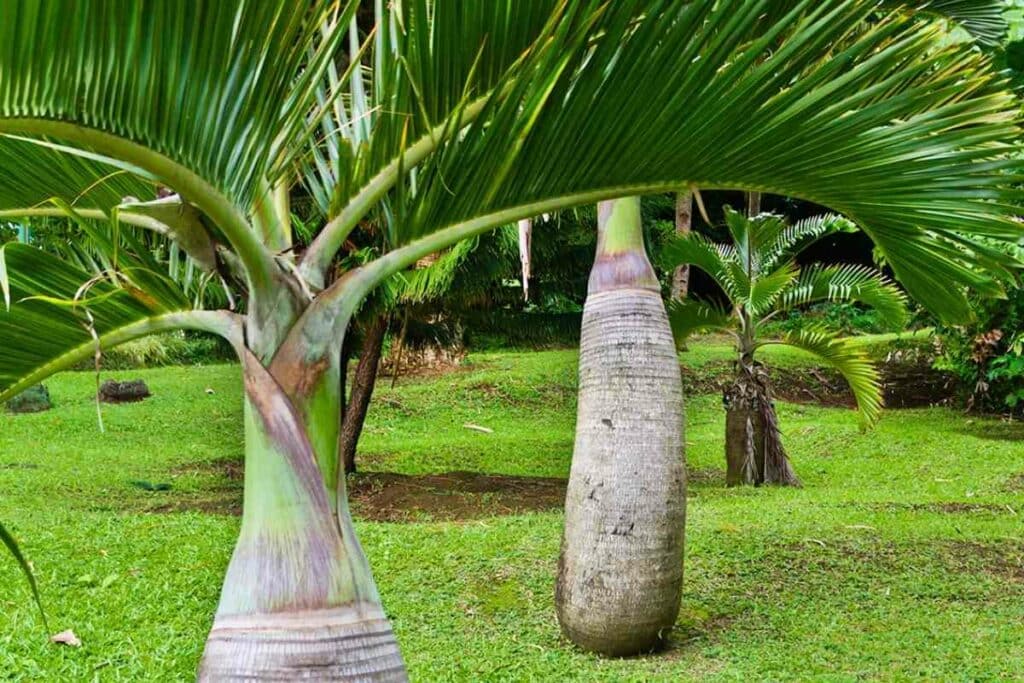
Nonetheless, it’s a beautiful evergreen plant with a pale grey to white trunk.
However, the bottle shape ‘fades’ as the plant matures and elongates.
On top of the trunk, there’s a canopy made of at least four glossy-green feather-like leaves.
The fronds emerge from a pale green crown shaft.
Bottle Palm is saltwater and drought tolerant. However, it can survive at sub-zero temperatures.
Which Palm Tree Species Can You Grow Near Your Swimming Pool?
The most critical consideration factors when choosing poolside palm trees are:
- climate
- the size of the tree
- the invasiveness of its roots
- and how to deal with seeds
As seen above, most small palm trees can withstand various climates, ranging from extreme droughts to freezing conditions.
The most critical thing to do is water them before they start wilting.
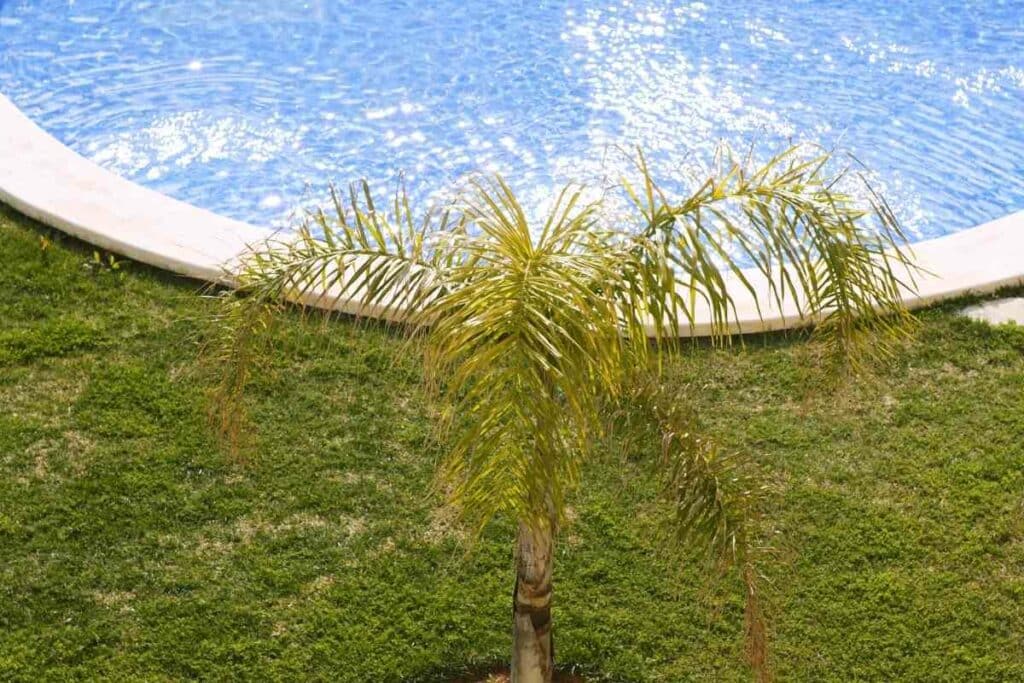
The distance between a plant and your swimming pool depends on its root structure.
Generally, extensive roots can damage the pool itself or the piping.
PalPalms are a popular choice because they have non-invasive roots.
While growing trees by your swimming pool enhances privacy and provides shade, it has drawbacks.
Leaves and seeds dropping from the plants make your pool dirty, requiring you to clean it more often.
For This Reason: It’s wise to avoid species that produce a lot of seeds, such as Medjool Date Palms and Queen Palms.
How Do You Grow Palm Trees in Pots?
Before anything, fill the pot with well-draining soil.
Ensure that you handle the roots carefully, as the plant can die if the roots break or tear.
Ideally, it would be best if you didn’t touch the roots when transferring the plant into the pot.
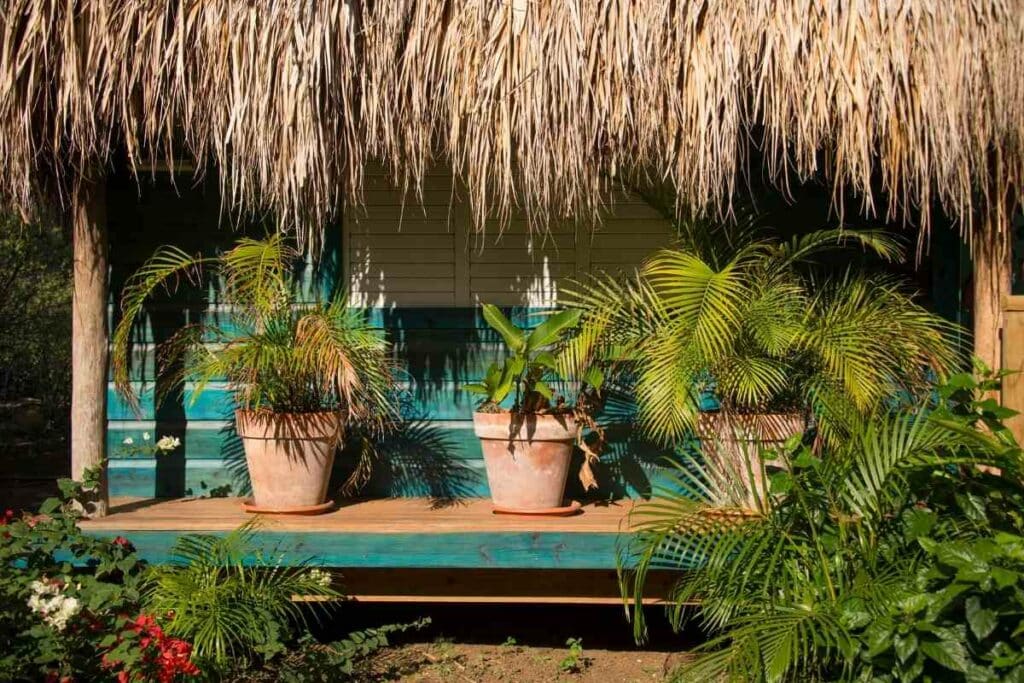
Ensure that the roots don’t go too deep when planting the palms.
Once transplanted, water it immediately.
The water fills all the remaining air pockets around the roots that can cause rotting and disease if left unattended.
After This – You can reduce the watering frequency. However, you need to apply fertilizer at least four times yearly. The plants are usually ready for the first application two to three months after planting.
The most significant benefit of growing palms in pots is mobility. You can move the plants whenever you want to vary the appearance of your backyard.
Even better, you can move the plant indoors if there’s an impending windstorm or any other harsh weather conditions.
How Does Drainage Affect Palm Trees?
Different soils have varying degrees of drainage – sandy soils are the best while clay soil is the worst.
When clay dries up, it forms an impenetrable solid mass. Palm trees are unable to extract nutrients from such soils.
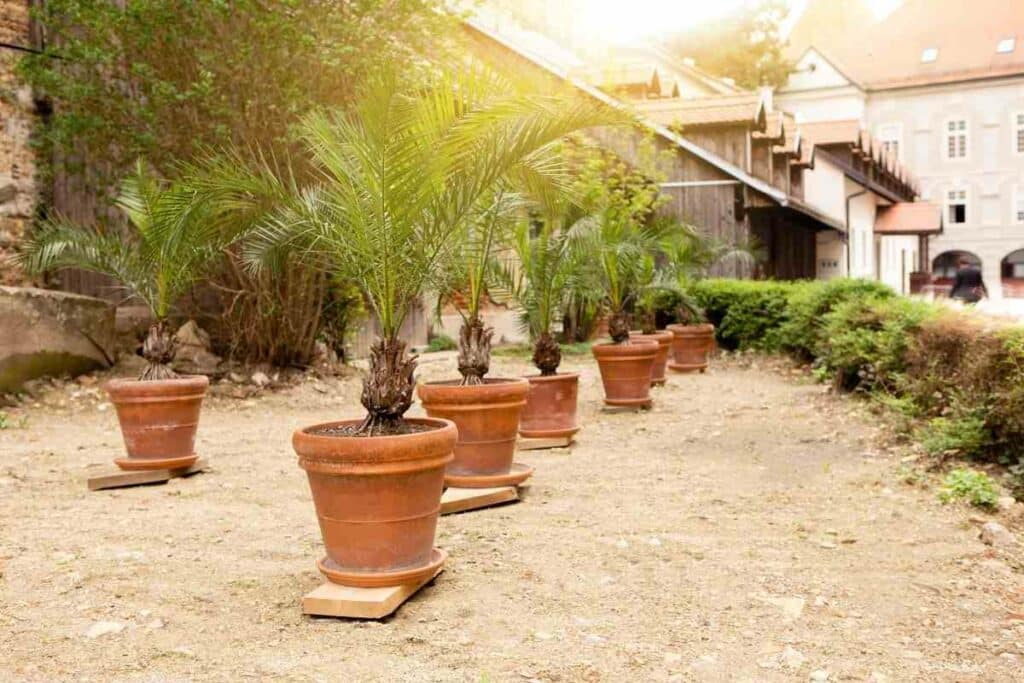
You need to dig up such soil and mix it with others to make it useful.
Additionally, water tends to clog around clay because of its poor drainage. If left for extended periods, this can cause root rot.
Ideally: Water shouldn’t take more than two hours to pass through the soil if you want your palm trees to flourish.
Does Chlorine Affect Palm Trees?
Chlorine is vital to keeping your pool water clean and free of pathogens.
Unlike other plants, palm trees are resistant to this chemical.
This is due to a thick waxy coat on their fronds that protects against any splashed chlorine.
Wrapping Up
From dark-hued interiors to ambient lighting, modern swimming pools have several features to enhance the swimmer’s experience.
Palm trees, such as the ones mentioned above, can significantly improve the atmosphere around your pool.
Even more, they can serve as the centerpiece of your backyard.
